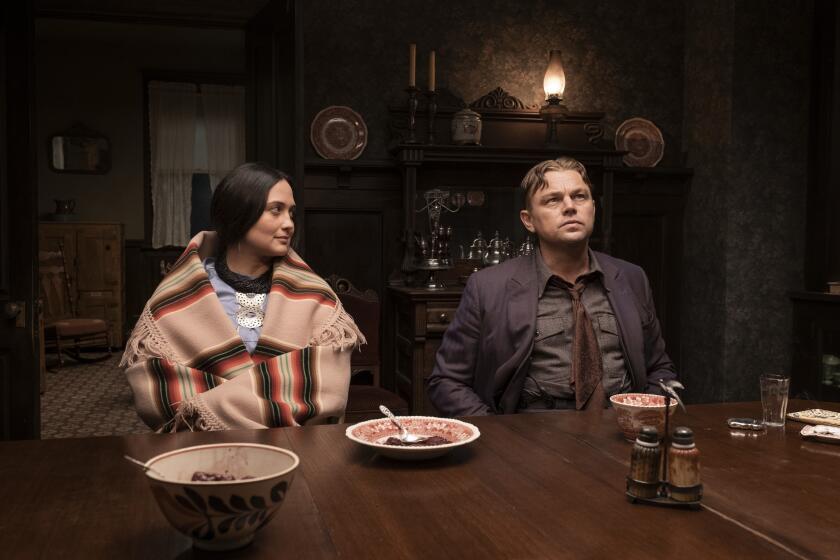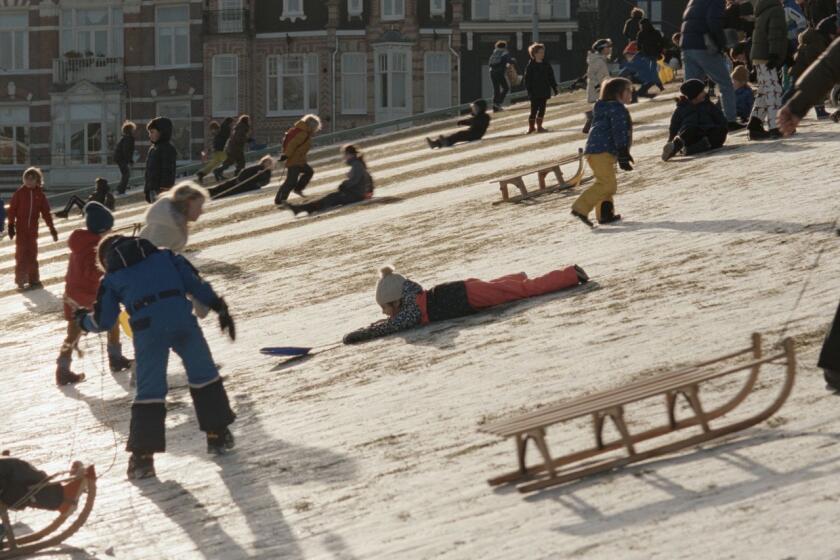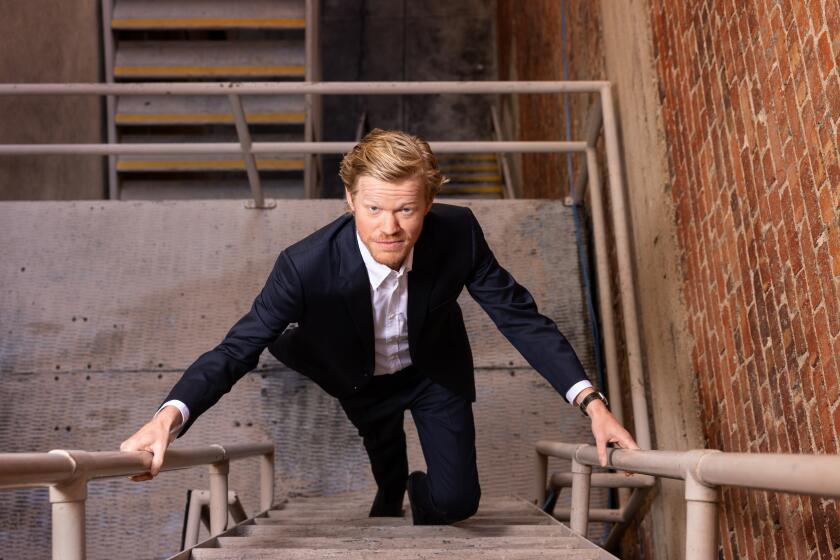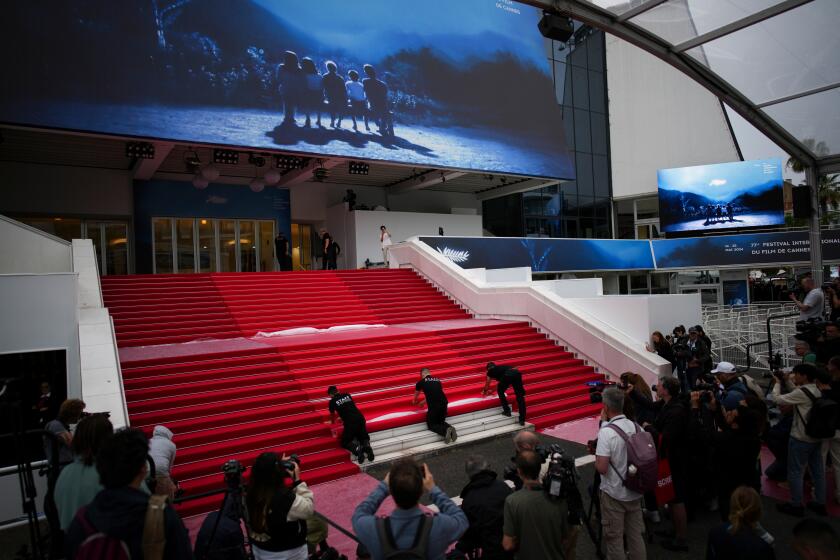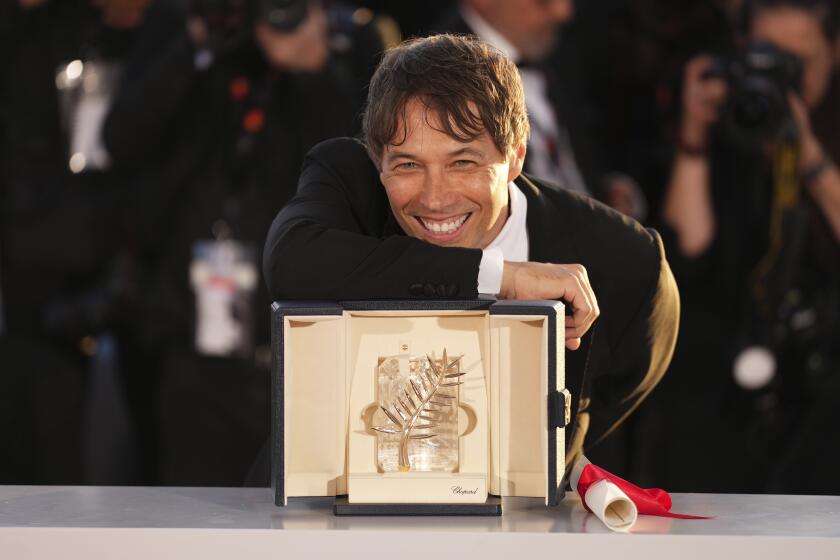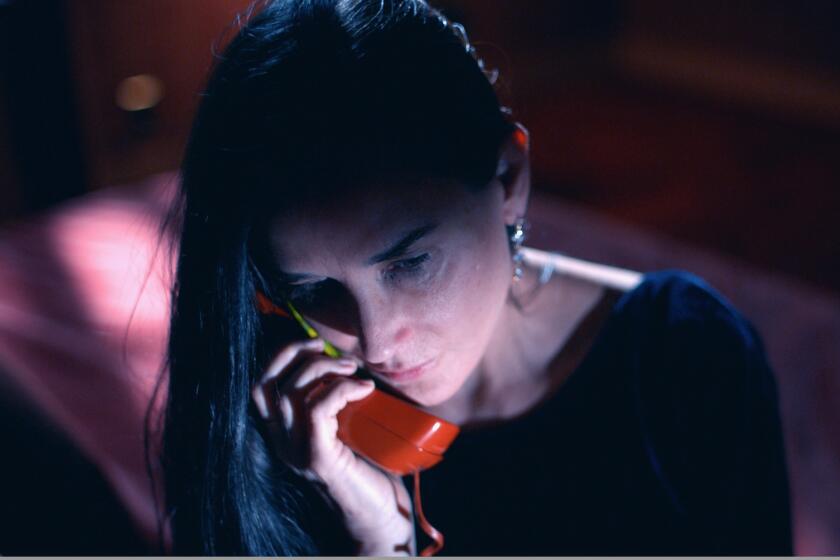With two essential films, Cannes finds haunting new prisms on the Holocaust
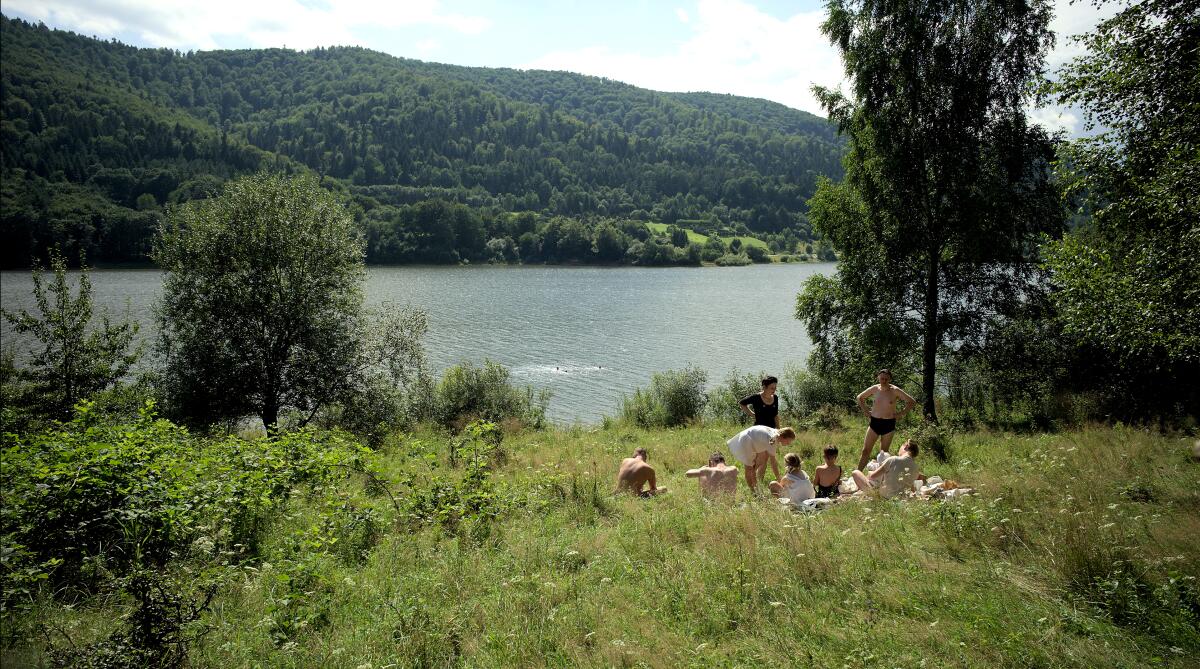
- Share via
CANNES, France — Even before it entered its first weekend, the 76th Cannes Film Festival had claimed its first critical triumph and competition standout with “The Zone of Interest.” An implacably chilling, entirely mesmerizing portrait of a family living in the shadow of the inferno, the movie was greeted at its Friday night gala premiere with rave reviews, crass Academy Awards speculation (“Has Director Jonathan Glazer Finally Hit the Oscar ‘Zone’ With ‘Interest’?” wondered a Variety headline) and the usual meaningless gush about its lengthy standing ovation. The sustained applause was deserved but also, I suspect, a little incongruous. I’m glad to have seen Glazer’s movie at a morning press screening that was noticeably absent any claps or cheers; as we stumbled out of the theater, silence seemed the only sane response.
Silence also feels appropriate following the news that the author Martin Amis, whose formidable oeuvre includes this movie’s 2014 source novel, died Friday at the age of 73. Glazer’s “Zone of Interest,” it should be noted, is dramatically different from Amis’, with which it shares little more than a title and a setting. Pared to the bone, the movie opens with several moments of pitch-black screen and the lushly dissonant surge of Mica Levi’s score — an unsettling overture that prepares us not just to look, but to listen. (Levi also composed the music for Glazer’s entrancing 2013 science-fiction masterpiece, “Under the Skin.”)
As we’re ushered into the quotidian rhythms of life at a comfortable two-story house in Poland, where a husband and wife live with their young children and a few servants, our ears can’t help but pick up on a muted but unceasing chorus of background noises: high screams, barking dogs, crackling flames, clanging metal and not-infrequent gunfire. The meticulous sound design is matched by a visual style that Glazer and his cinematographer, Łukasz Żal, achieved by hiding cameras throughout the house and grounds, yielding a series of exactingly composed, fluidly edited static shots that at times suggest high-definition surveillance video.
Depending on which area you’re surveying — an upstairs bedroom, or the enormous backyard and expertly tended garden — you might catch glimpses of a high concrete wall, a barbed-wire fence or the smoke from an arriving train or belching chimney. The meaning of these images will be grimly clear to a 21st-century audience; for this 1940s family they have become shockingly easy to accommodate and, up to a point, ignore. It doesn’t take long for us to learn that the man of the house is the SS officer Rudolf Höss (Christian Friedel) and the walled-off compound is Auschwitz, where, as commandant, he devises and implements ever more efficient means of mass murder.
The searing, sprawling ‘Killers,’ which premiered Saturday at Cannes, is both like and unlike anything its director has ever done.
From time to time we hear details of his work, as he studies blueprints for an advanced crematorium design or tries to ward off a transfer to Germany that would upend him and his very well-settled family. “This is the life we’ve always dreamed of,” says Höss’ wife, Hedwig (Sandra Hüller), a sentiment so appalling that if you didn’t already know better, you’d wonder if she might be oblivious to the thousands of people, most of them Jews, being gassed and cremated on the other side of that wall.
But Hedwig and her husband are oblivious to nothing; they’re just very good at compartmentalizing. Damnation awaits them, but for now they lead lives of enviable privilege, with family outings, birthday parties and visits from Grandma. There are mordantly funny touches, from the length of Höss’ morning commute (a quick horseback ride through the death-camp gates) to the grisly discovery that awaits him when he takes his kids canoeing in an ash-filled river. The Hösses are being asphyxiated themselves, just a lot more slowly: The dead are in the air they breathe, in the soil in which they grow their vegetables and on the petals of Hedwig’s much-prized flowers.
Glazer’s immaculate formal precision will remind many of Stanley Kubrick, though his skill at indicting his characters (and by extension, his audience) also bears the imprint of the Austrian master Michael Haneke. “The Zone of Interest,” which will be released in the U.S. by A24, is as methodically engineered a cinematic booby trap — for its characters, and its audience — as anything Haneke has ever directed. It’s very much about the banality of evil, an apt if overused term that Hannah Arendt coined while writing about the trial of Adolf Eichmann, one of Höss’ bosses. But the movie doesn’t stop there: It’s also about the convenience of evil, the tolerability of evil, the myriad invisible chains of complicity and commerce that turn evil into a thriving transnational business.
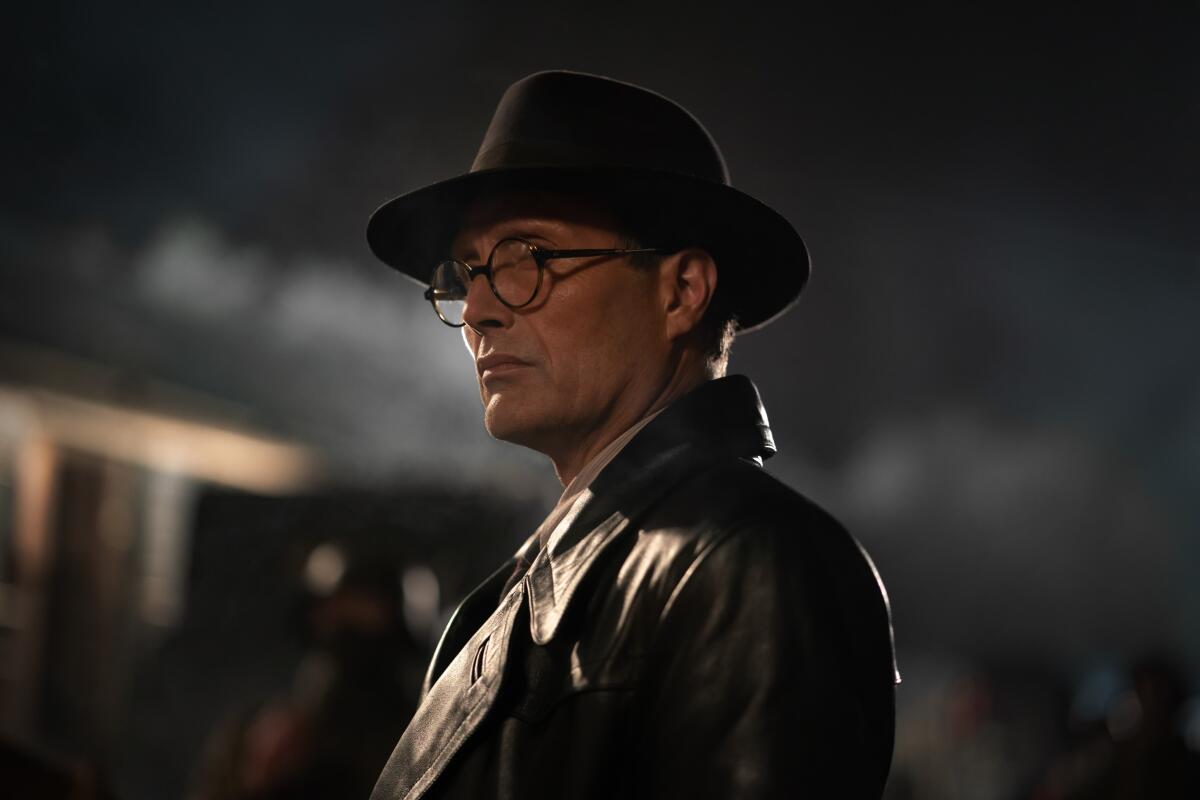
Those chains have of course been well chronicled, if seldom this artfully, by the countless dramas and documentaries about the Holocaust that have flooded theaters over the years. Certainly it’s a subject that has never been far from Cannes, the festival where “Life Is Beautiful” won the Grand Prix in 1998, and “The Pianist” took home the Palme d’Or in 2002. Haneke’s own “The White Ribbon,” a more oblique commentary on the sins of the Third Reich, won the Palme in 2009, at the same festival where Quentin Tarantino premiered his Nazi-napalming revenge epic, “Inglourious Basterds.” In 2015, the Grand Prix was awarded to László Nemes’ grimly immersive Auschwitz drama “Son of Saul,” a movie whose furious handheld camerawork and up-close look inside the barracks and gas chambers are the antithesis of “The Zone of Interest’s” coolly measured, outside-and-not-quite-looking-in style.
Complaining about a surfeit of Holocaust movies is standard critical practice, though given the resurgence of antisemitism worldwide and particularly in the U.S., it’s hardly surprising that filmmakers have felt compelled to return to the subject again and again — and, in recent years, with a gratifying new level of formal intelligence and sophistication. What unites “Son of Saul” and “The Zone of Interest,” for all their differences, is a level of aesthetic distance, an impatience with the familiar, classical narrative conventions and a conscientious refusal to depict atrocities on screen.
With ‘Occupied City,’ filmmaker Steve McQueen adapts his wife’s house-by-house, street-by-street guide to the city’s history under German occupation.
Glazer isn’t the only filmmaker to arrive in Cannes this year with a picture that confronts the horrors of Nazism in a manner both unflinching and oblique. No, I’m not talking about James Mangold’s hotly anticipated “Indiana Jones and the Dial of Destiny,” fun as it is to see Harrison Ford slap around a bunch of SS officers for old times’ sake. I’m talking about “Occupied City,” the first documentary feature from the British director Steve McQueen and one of the essential early highlights of this year’s Cannes.
McQueen’s particular zone of interest is the fate of Amsterdam’s Jewish population during World War II, which we learn about through a series of accounts relayed by an unseen narrator (the British actor Melanie Hyams). The stories we hear are individually and cumulatively devastating, and they’re notably arranged not by date, but by location. We visit the sites of long-demolished schools, shops and restaurants that were once bustling enclaves of Dutch Jewish life, only to be emptied out as Jews were banned and subjected to brutally enforced curfews. We might hear an account of a foundling left on this particular doorstep, or perhaps the family that once lived here and was forced to flee or go into hiding. Anne Frank and her family are mentioned but not dwelt on at length — a touch that feels of a piece with McQueen’s expansive, egalitarian sensibility.
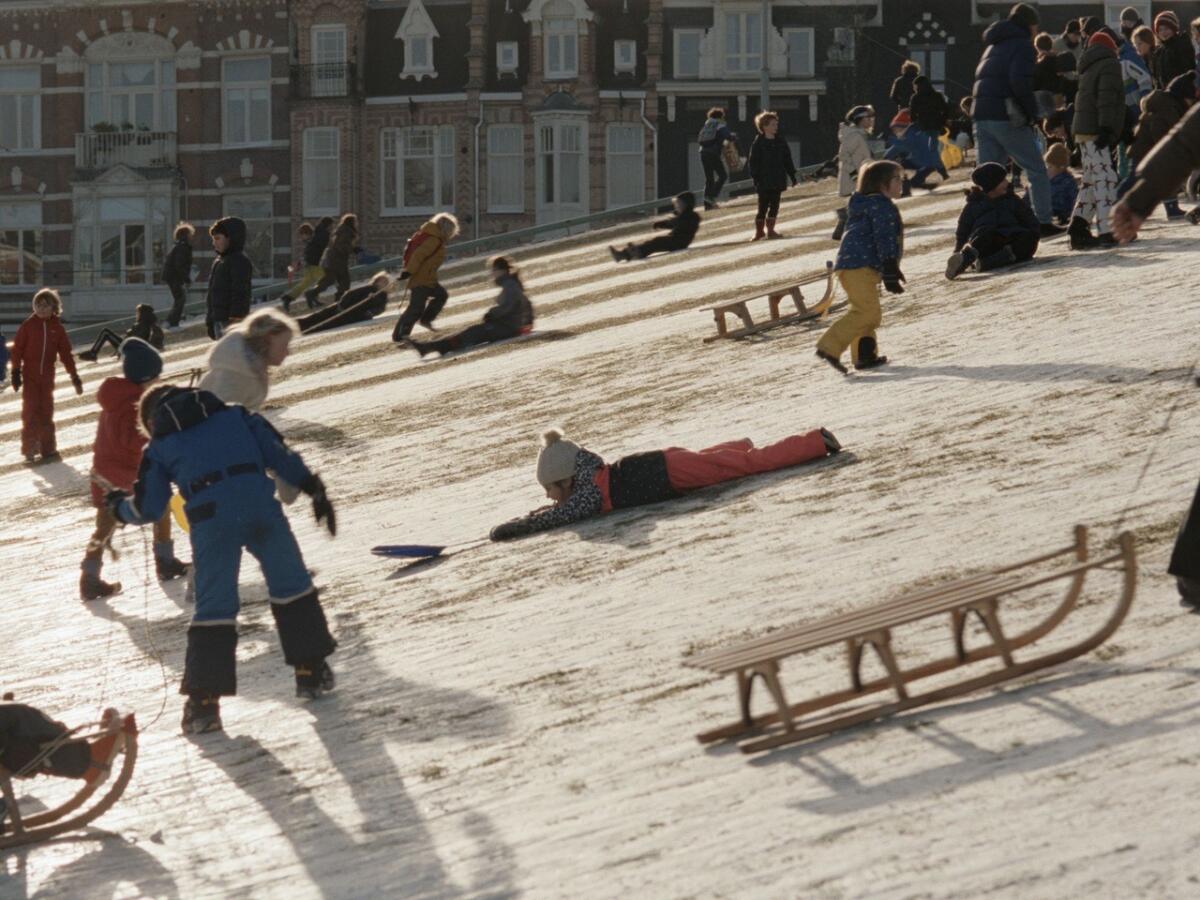
What makes “Occupied City” a challenge — and a welcome, worthwhile one — isn’t its leisurely four-and-a-half-hour running time (including intermission), but rather its formal daring. McQueen achieves an intricate dialectic of past and present; while Hyams’ narration remains locked away in the past, every image we see is of Amsterdam in the present day, with particular focus on the city under early pandemic lockdown. This sustained juxtaposition of now versus then produces a remarkable level of aesthetic tension; sometimes the images and the narration chime together beautifully, and sometimes they achieve a strange, unsettling dissonance. It demands active viewership, an ability to sift through invisible layers and imagine the past superimposed on the present. (More than once I thought about the integral influence of Claude Lanzmann’s landmark “Shoah,” which, while entirely different in structure, similarly refuses to use archival images and/or footage to re-create an irretrievable past.)
McQueen first came to Cannes in 2008 with his feature debut, “Hunger,” and would have been back here in 2020 with “Lovers Rock” and “Mangrove” (both from his TV omnibus, “Small Axe”), had that year’s Cannes not been canceled because of the pandemic. “Occupied City,” which is being presented out of competition at this year’s festival, is in some ways McQueen’s latest chameleonic swerve; he began his career as a visual artist and has since directed feature films (“Shame,” “12 Years a Slave”) and a television project (“Small Axe”). In many senses, the new movie feels like a labor of love; it’s based on the illustrated book “Atlas of an Occupied City, Amsterdam 1940-1945,” by the writer and filmmaker Bianca Stigter, who is married to McQueen. (They make their home in Amsterdam.)
Stigter recently directed the 69-minute documentary “Three Minutes: A Lengthening,” a brilliant companion piece to this movie and another highly conceptualized exploration of antisemitic persecution. That movie was acclaimed for its economy and elasticity; “Occupied City” has drawn mixed reactions here for its alleged overlength and monotony. Don’t let the short attention spans of others scare you off when A24 releases this one in theaters. This is vital cinema from a filmmaker with one eye on the not-so-distant past and the other on our precarious future.
More to Read
Only good movies
Get the Indie Focus newsletter, Mark Olsen's weekly guide to the world of cinema.
You may occasionally receive promotional content from the Los Angeles Times.
